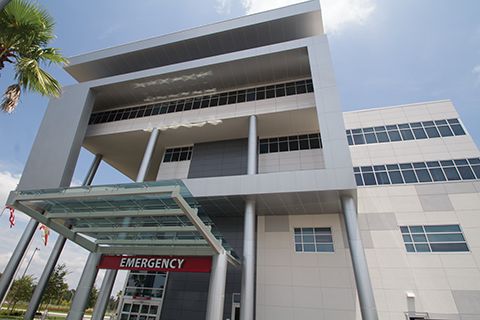
Fire propagation
As mentioned, both the 2010 FBC and the 2012 IBC require MCPs installed above 12 m (40 ft) be fire-resistant. However, if there is a plastic insulation product such as polyiso, then both those codes dictate (i.e. in 2603.5.5) the wall assembly meets National Fire Protection Association (NFPA) 285, Standard Fire Test Method for Evaluation of Fire Propagation Characteristics of Exterior Non-Load-Bearing Wall Assemblies Containing Combustible Components.
For this reason, MCPs with ci should be tested with FR cores, rather than PE. MCPs with proprietary polyiso materials must also comply with NFPA 285.
Conclusion
Sheathing and cladding products have found innovative ways to fasten through continuous insulation without losing structural support, allowing water leakage, or creating thermal bridges. Proprietary metal composite panel wall assemblies that make use of ci have been tested per the Florida Building Code’s TAS 201, 202, 203 and have been verified as barriers against impact, thermal, wind, water, air, vapor, condensation, and fire.
They can also bring about the potential for credits under the U.S. Green Building Council’s (USGBC’s) Leadership in Energy and Environmental Design (LEED) rating program. For example, such assemblies may contribute to a project’s attempt to secure points under the following credits:
- Minimum Energy Performance (i.e. achieving ASHRAE 90.1 by using ci to reduce thermal bridging and air infiltration);
- Optimize Energy Performance (i.e. exceeding ASHRAE 90.1 energy requirements);
- Thermal Comfort (i.e. improving temperature and humidity control for human occupancy); and
- Innovation in Design (i.e. being recognized for combining a rainscreen, impact resistance, insulation, air barrier, and flashing in a single system).
As a national policy, replacing thermal bridging with ci has the potential for significant energy savings and a subsequent reduction in CO2.
Patrick Condon, PhD, LEED AP, has a degree in mathematics from the University of Notre Dame, a master’s in industrial engineering from Illinois Institute of Technology, and a PhD in operations research from Arizona State University. He has 15 years of hospital experience in the United States, Puerto Rico, and Saudi Arabia. The owner of West Tampa Glass, Condon has a Glass & Aluminum-certified Specialty Contractor License, a Certified Residential Contractor License, and is a LEED AP BD+C. He can be contacted via e-mail at pcondon@westtampaglass.com.





This is interesting information about the MCM vulnerabilities with regard to high winds. It seems like the new IBC has made a good change for safety. There are a lot of storms where I live, so the hooks and insulation would be a great idea. Thanks for sharing.